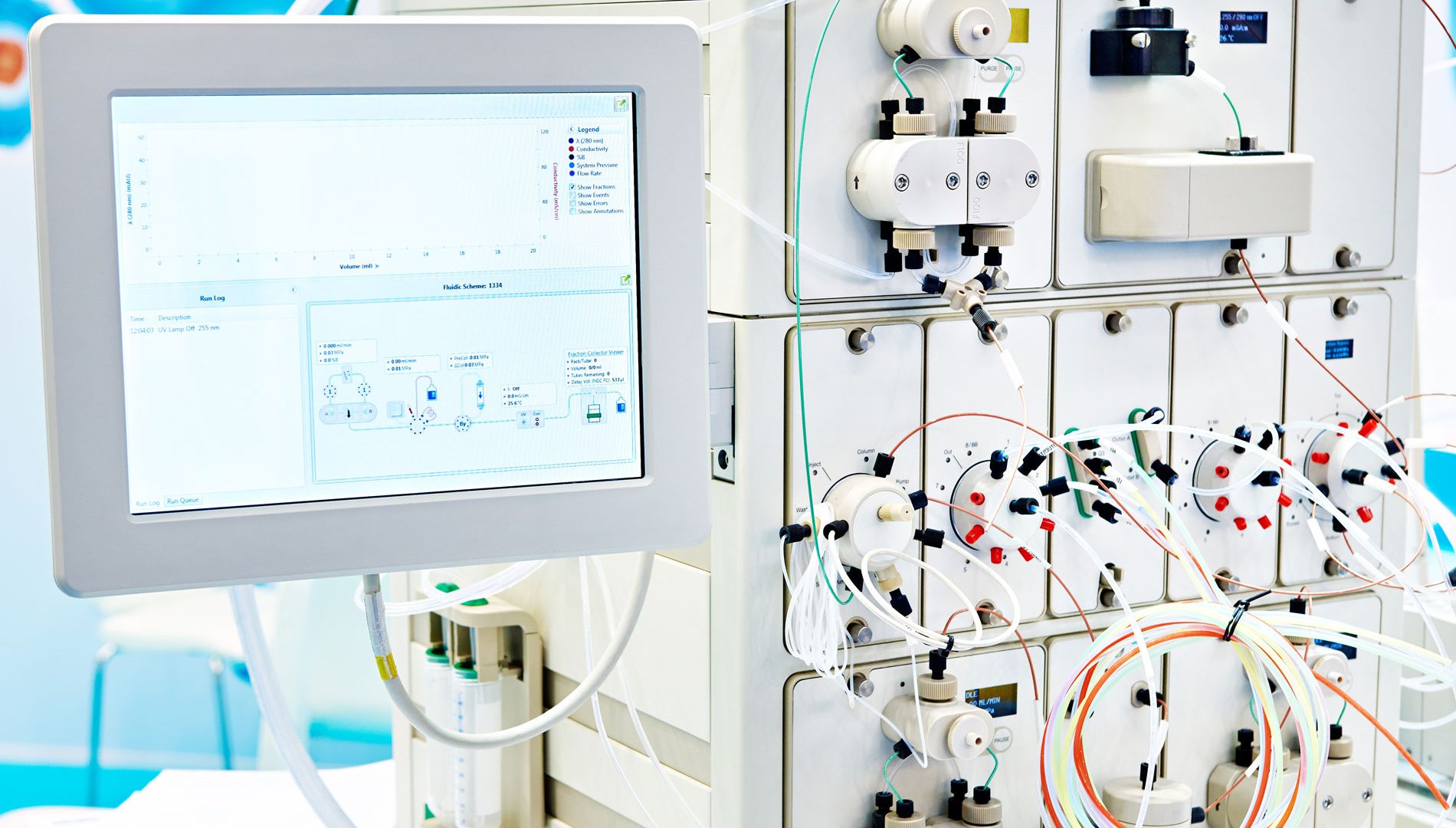
Viral Clearance safety testing for biotherapeutics
Viral Clearance studies are a critical preventative measure to ensure the security of biological products. Accidental viral contaminations can unfortunately happen during the manufacturing process. The process must comprise manufacturing steps which reduce contamination of the final products to an acceptable level for the safety of the patient. Viral Clearance is required for a multitude of biotherapeutics products that include medical devices, monoclonal antibodies, gene therapy products, blood, and plasma products from donors.

Viral Clearance and the New ICH guidelines
Viral Clearance and monoclonal antibodies (mABs), plasma and proteins. (mABs)
Viral Clearance and traditional biotherapeutics, which can be classified as monoclonal antibodies, plasma and / or blood products, and recombinant proteins have dominated the majority of viral clearance studies across the globe. With this extensive knowledge and history, one major addition to the ICH guidelines includes the use of ‘prior knowledge’ or ‘modular clearance.’ This concept reviews and evaluates historical data and encourages data use in place of study execution, minimizing timelines, resources, and costs. This strategy will hopefully benefit the patients by reducing the overall costs of these biologics.
“A big thank you for your reactivity and your help on this study. With these elements, we were able to make a convincing response to our regulatory authority. Thank you for your suggestions; we have integrated them into our global production strategy.

Viral Clearance and Gene Therapy Products
With the review, development, and implementation of the latest ICH guidelines, it is not a clear requirement that all Gene Therapy products undergo viral clearance in their manufacturing process, where applicable. These Gene Therapy products offer a truly transformative solution for a patient’s life. When manufacturing these products, certain steps are considered for viral clearance. Chromatography studies will be a prominent consideration. Chromatography studies will be unique to each gene therapy products, and provide a range of log reduction values that can be increased through our FIO ‘Investigational’ Viral Clearance studies. These studies will help to optimize the potential results for each individual process step. Our current portfolio reflects 37% gene therapy clients.
By performing your Viral Clearance testing at Texcell, you will be able to check whether your process inactivates or removes viruses and avoid potential viral contamination.
Since 1990, the Texcell group laboratories, in Europe, the USA, and Asia have executed a combined total of over 10,000 Viral Clearance studies. Texcell’s experienced scientific staff can offer support, guidance, and consultation services for Viral Clearance study design, selection of virus panel, and regulatory compliance. Texcell also provides investigational viral clearance studies “for information only (FIO)”. We tailor them to be quick, cost-conscious, and give the most critical information needed to design a robust GLP Viral Clearance testing.
Methods
Texcell can help you for:
- Maximizing effective Viral Clearance from your manufacturing platform to inactivate or remove viruses
- Performing risk assessments for Viral Clearance performance in advance of parameter setting for process validation
- Collaborating on experiment planning to get the most from FIO studies
- Designing Viral Clearance studies for early and late phase regulatory submissions
- Preparing virus safety assessments for your regulatory submission documents
- Being an extension of your process development team in meetings with your CMC project team or your CMC regulatory team
- Designing Viral Clearance experiments for novel manufacturing processes
The Viral Clearance products experience includes, but is not limited to;
- Monoclonal antibodies
- Recombinant proteins
- Gene therapy products
- Cell therapy products
- Ortho biologics
- Tissues, bone, and collagen
- Blood products
- Nanoparticles
- Vaccines
Investigational viral clearance, Texcell is not limited to the manufacturing process
We define investigational Viral Clearance studies as For Information Only or “FIO”, and tailor them to be quick, cost-conscious, and give the most critical information needed to design a robust GLP Viral Clearance. Thanks to FIO viral clearance, Texcell can work with a wide range of customers such as:
- Household appliance companies (refrigerator, ironing facilities…)
- Air conditioning companies
- Car manufacturer (for air filter)
Texcell performed for these companies, studies to check a potential effect that their products could have on various viruses, including the Sars-Cov-2. Our FIO viral clearances will allow you to communicate the ability of your products to inactivate or remove any potential viral contamination.
Virus Panel
Texcell is one of the rare companies able to produce routinely high-titer solutions (>109 TCID50/ml) of most if not all of the viruses for clearance studies. Virus can be produced “highly purified” to avoid membrane clogging during nanofiltration studies.
Here are the most common viruses used for viral clearance studies. Please enquire should you not find your virus of choice in the table below. We most certainly have it in our collections.
| Viruses | PPV | Reo3 | MLV | BVDV | PRV |
| Name | Porcine ParvoVirus | Reovirus type 3 | Murine Leukemia Virus (xMLV) | Bovine viral diarrhea virus | Pseudorabies virus (Aujeszky) |
| Family | Parvoviridae | Reoviridae | Retroviridae | Flaviviridae | Herpesviridae |
| Genus | Parvovirus | Orthoreovirus | Oncovirus | Pestivirus | Varicellovirinae |
| Origin / Host | Porcine | Human | Murine | Bovine | Porcine |
| Genome | single strand DNA | dble strand RNA | single strand RNA | single strand RNA | dble strand DNA |
| Envelop | Naked | Naked | Enveloped | Enveloped | Enveloped |
| Size | 18 – 26 nm | 60 – 80 nm | 80 – 100 nm | 45 – 55 nm | 150 – 200 nm |
| Virus | ADV5 | EMCV | Para3 | HIV | MVM |
| Name | Adenovirus type 5 | Encephalomyo-carditis virus | Parainfluenza virus type 3 | Human Immuno-deficiency virus 1 | Minute Virus of Mice |
| Family | Adenoviridae | Picornaviridae | Paramyxoviridae | Retroviridae | Parvoviridae |
| Genius | Adenovirus | Cardiovirus | Respirovirus | Lentivirus | Parvovirus |
| Origin | Human | Murine | Human | Human | Murine |
| Genome | dble strand DNA | single strand RNA | single strand RNA | single strand RNA | single strand DNA |
| Envelope | Naked | Naked | Enveloped | Enveloped | Naked |
| Size | 70 – 90 nm | 28 – 30 nm | 100 – 300 nm | 80 – 100 nm | 18 – 26 nm |
| Virus | H1N1 | HAV | Polio | SV40 | TGEV |
| Name | Influenza A virus | Hepatitis A virus | Polio virus (Sabin) | Simian virus 40 | Transmissible gastroenteritis virus |
| Family | Orthomyxoviridae | Picornaviridae | Picornaviridae | Poliomaviridae | Coronaviridae |
| Genius | Influenzavirus | Hepatovirus | Enterovirus | Poliomaavirus | Coronavirus |
| Origin | Human | Human | Human | Simian | Porcine |
| Genome | single strand RNA | single strand RNA | single strand RNA | dble strand DNA | single strand RNA |
| Envelope | Enveloped | Naked | Naked | Naked | Naked |
| Size | 100 – 120 nm | 28 – 30 nm | 28 – 30 nm | 45 – 100 nm | 100 – 120 nm |
Levels of Service
We offer three levels of service for viral clearance studies. For all levels of service, the Sponsor provides all necessary reagents (including columns and filters) to reproduce the manufacturing steps on a down scale model. Texcell team provides standard laboratory equipment (including HPLC), the selected virus panel, performs virus spiking of the starting material, and all related assays for quantitation of virus.
Level III: Premium Service
The scaled-down manufacturing process is tech transferred to Texcell. Texcell personnel execute the entire study at the Texcell laboratory.
Level II: Collaborative Service
Texcell personnel assist Sponsor in execution of the scaled-down manufacturing process at the Texcell laboratory.
Level I: Classic services
Sponsor executes the scaled-down manufacturing process at the Texcell laboratory. Texcell will oversee the virus spiking and the titrations
Prion Clearance Studies
Prions (PrPres, PrPsc, PrPtse) are non-conventional transmissible agents (NCTAs) that have become of major concern to pharmaceutical companies processing bovine or human material since the emergence of new variant Creutzfeldt-Jacob disease (vCJD).
Prion investigation studies may be required by the regulatory agencies
- Demonstrate that a cleaning procedure between each production batch can destroy prion proteins in the manufacturing equipment.
- Investigate the removal of prions during the purification of biological products (i.e., blood fractionation products, bovine extracts, etc.)
The overall level of prion reduction can be determined by deliberately adding (“spiking”) significant amounts of prion to the crude material (or to a model of the manufacturing vessels) and by demonstrating its removal or inactivation during the subsequent steps. Our highly trained staff perform these spiking experiments on scaled-down processing steps in our biosafety level 3 security laboratory.
One main strain is available for the studies, 263K (adapted to hamster), spike preparations and titration methods are also available. Please ask us to help you choose the most relevant parameters for your prion investigation study. We will advise you based on the latest technical and regulatory constraints.


